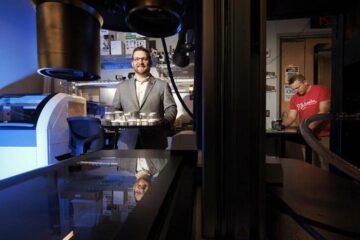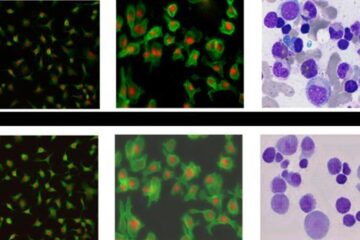New Genomics Study Shows Ancestry Could Help Solve Disease Riddles

However, so many variations among individual genomes exist that identifying mutations responsible for a specific disease has in many cases proven an insurmountable challenge. But now a new study by scientists at The Scripps Research Institute (TSRI), Scripps Health, and Scripps Translational Science Institute (STSI) reveals that by comparing the genomes of diseased patients with the genomes of people with sufficiently similar ancestries could dramatically simplify searches for harmful mutations, opening new treatment possibilities.
The work, reported recently in the journal Frontiers in Genetics: Applied Genetic Epidemiology, should speed the search for the causes of many diseases and provide critical guidance to the genomics field for maximizing the potential benefits of growing genome databases.
Much work is already under way to sequence the DNA of people suffering from diseases with unknown causes, called idiopathic conditions, to find the roots of their problems. Unlike more complex conditions such as diabetes, in some cases a limited number of genetic defects, or even a single mutation, can cause an idiopathic disease. Identifying those critical mutations can lead to effective treatments for previously mysterious problems.
Complicated Searches
While there have been some successes, in many other instances the genetic basis of an idiopathic disease remains elusive. Among other groups, The National Human Genome Research Institute runs searches for idiopathic disease sufferers and is able to find offending gene sequences only about 30 percent of the time. “One explanation for that other 70 percent might be that the diseases are enormously complex,” said the new study’s senior author Nicholas Schork, a professor at TSRI, director of research for Scripps Health’s genomic medicine program, and director of biostatistics and bioinformatics at STSI, “but it could be that they’re still searching in the noise.”
The new work offers a likely filter for much of that noise. The results show that comparing a person’s DNA sequence against existing genomes for those whose ancestry is not sufficiently similar, as is typically the case, can cause serious problems. Countless differences that seem unique to a patient might instead be DNA variants carried by everyone with the same ancestry. A researcher might, for instance, identify hundreds of variants and not be able to zero in on the one responsible for a disease.
But the new results show that comparing closer ancestry matches will dramatically reduce the number of variants identified as potentially responsible for a disease, reducing a search to a workable number.
For the work, the team developed a tool called the Scripps Genome Adviser. This processing framework uses a supercomputer to incorporate a variety of databases and algorithms to identify DNA variants in a particular genome relative to reference genomes. It then uses algorithms to analyze these variants and predict whether they have any physiological effects, and if so what those might be.
The team began with nearly 60 whole human genome databases and ran three key types of computing experiments. First the researchers identified the number of variants in the reference human genomes and found that on average each has millions of variants, about 12,000 of which have functional effects. Then the scientists looked at the rates at which variants appeared in various ancestry lines.
Honoring Ancestry
Importantly, the scientists didn’t stop there. They deliberately inserted a mutation known to cause disease into a genome, then ran this genome through the Adviser to see how effectively it could identify that known variant as unique.
When the team ran the searches comparing that altered genome against a reference panel of genomes that included different ancestries, the known variant remained effectively lost in a sea of other variants. But comparison against genomes of similar ancestry dramatically reduced the number of variants identified, allowing identification of the inserted disease-causing gene.
A study published simultaneously with the Scripps team’s paper by Professor Carlos Bustamante and colleagues from Stanford University also pointed to ancestry’s importance, but this is the first time a team has been able to look at the problem on the whole-genome scale. “Others have indeed recognized ancestry as important,” said Schork, “but no one had shown how much it could haunt a particular study, especially on a whole genome basis.”
As importantly, prior to this study it wasn’t clear how to address the ancestry issue. But the new study provides clear direction. The team calculated that identification of the vast majority of ancestral variants can be performed successfully with a reference panel of less than 20 genomes—though it could well take more to identify a particular ancestry group’s rarest deviations. Of course, most people have more than one ancestry line, meaning that in practice a patient’s reference panel would need to include multiple reference groups.
This result should act as a guide for continuing genomics work. Many ancestries are already well represented, meaning that assembling an effective reference panel is possible in some cases. But the number of whole genomes from a particular ancestral group isn’t the only consideration. Ideally, reference genomes need to be from relatively disease-free people, meaning subjects who lived to an old age without major complications from genetic conditions.
Recognizing the importance of ancestral comparisons, researchers and companies can now deliberately work to fill any holes. “Building those sorts of resources could only benefit the community,” said Schork. In fact, Schork, Ali Torkamani and others at Scripps are collaborating with Complete Genomics, Inc., a whole genome sequencing company in Mountain View, CA, to develop appropriate reference panels for clinicians and researchers.
Deciphering Diseases
Schork and his colleagues are already working toward broader application of their results using an increasingly advanced version of the tool. While processing a single person’s genome to identify and analyze variants took about four days when the project began, today the Adviser can accomplish the task in about 30 minutes.
Along with the paper’s lead author Torkamani, Schork is a founder of a company called Cypher Genomics that has licensed the Scripps Genome Adviser for disease-focused research. The teams in both industry and academia hope not only to continue idiopathic disease research, but also to apply similar principles to search for the causes of more complex congenital conditions. “The broader message of our work is that you have to take ancestry into account no matter what disease you’re studying,” said Schork.
In addition to Torkamani and Schork, other authors on the paper, “Clinical Implications of Human Population Differences in Genome-wide Rates of Functional Genotypes,” are Phillip Pham, Ondrej Libiger, Vikas Bansal, Guangfa Zhang, Ashley Scott-Van Zeeland, Ryan Tewhey and Eric Topol (director of STSI). For more information on the paper (doi: 10.3389/fgene.2012.00211), see http://www.frontiersin.org/Applied_Genetic_Epidemiology/10.3389/fgene.2012.00211/abstract
This research was supported by the National Institutes of Health (grant numbers 5 UL1 RR025774, 5 U01 DA024417, 5 R01 HL089655, 5 R01 DA030976, 5 R01 AG035020, 1 R01 MH093500, 2 U19 AI063603, 2 U19 AG023122, 5 P01 AG027734, 1 U01 HG006476-01), the Stand Up to Cancer Foundation, the Price Foundation and Scripps Genomic Medicine.
About The Scripps Research Institute
The Scripps Research Institute is one of the world's largest independent, not-for-profit organizations focusing on research in the biomedical sciences. Over the past decades, Scripps Research has developed a lengthy track record of major contributions to science and health, including laying the foundation for new treatments for cancer, rheumatoid arthritis, hemophilia, and other diseases. The institute employs about 3,000 people on its campuses in La Jolla, CA, and Jupiter, FL, where its renowned scientists—including three Nobel laureates—work toward their next discoveries. The institute's graduate program, which awards Ph.D. degrees in biology and chemistry, ranks among the top ten of its kind in the nation. For more information, see www.scripps.edu.
About Scripps Health
Founded in 1924 by philanthropist Ellen Browning Scripps, Scripps Health is a $2.5 billion nonprofit integrated health system based in San Diego, Calif. Scripps Health treats a half-million patients annually through the dedication of 2,600 affiliated physicians and 13,500 employees among its five acute-care hospital campuses, home health care services, and an ambulatory care network of physician offices and 23 outpatient centers and clinics.
Recognized as a leader in the prevention, diagnosis, and treatment of disease, Scripps Health is also at the forefront of clinical research, genomic medicine, wireless health care and graduate medical education. With three highly respected graduate medical education programs, Scripps Health is a longstanding member of the Association of American Medical Colleges. Scripps Health has been consistently recognized by Fortune, Working Mother magazine and AARP as one of the best places in the nation to work. More information can be found at www.scripps.org.
About Scripps Translational Science Institute
Part of San Diego, Calif.-based Scripps Health, the Scripps Translational Science Institute (STSI) is a unique community collaboration that initiates research that moves basic science from the lab to the patient bedside. STSI is supported by the NIH flagship program, Clinical and Translational Science Award (CTSA), awarded to The Scripps Research Institute in conjunction with its collaboration with STSI. In addition to Scripps Health and The Scripps Research Institute, collaborators in the STSI consortium include the Sanford-Burnham Medical Research Institute; Children’s Hospital of Philadelphia; Genomics Institute of the Novartis Research Foundation; The J. Craig Venter Institute; Salk Institute for Biological Studies; San Diego State University; San Diego Supercomputer Center; and The Neurosciences Institute. More information can be found at http://www.stsiweb.org.
For information:
Office of Communications
Tel: 858-784-8134
Fax: 858-784-8136
press@scripps.edu
Media Contact
More Information:
http://www.scripps.eduAll latest news from the category: Life Sciences and Chemistry
Articles and reports from the Life Sciences and chemistry area deal with applied and basic research into modern biology, chemistry and human medicine.
Valuable information can be found on a range of life sciences fields including bacteriology, biochemistry, bionics, bioinformatics, biophysics, biotechnology, genetics, geobotany, human biology, marine biology, microbiology, molecular biology, cellular biology, zoology, bioinorganic chemistry, microchemistry and environmental chemistry.
Newest articles

Bringing bio-inspired robots to life
Nebraska researcher Eric Markvicka gets NSF CAREER Award to pursue manufacture of novel materials for soft robotics and stretchable electronics. Engineers are increasingly eager to develop robots that mimic the…

Bella moths use poison to attract mates
Scientists are closer to finding out how. Pyrrolizidine alkaloids are as bitter and toxic as they are hard to pronounce. They’re produced by several different types of plants and are…

AI tool creates ‘synthetic’ images of cells
…for enhanced microscopy analysis. Observing individual cells through microscopes can reveal a range of important cell biological phenomena that frequently play a role in human diseases, but the process of…





















